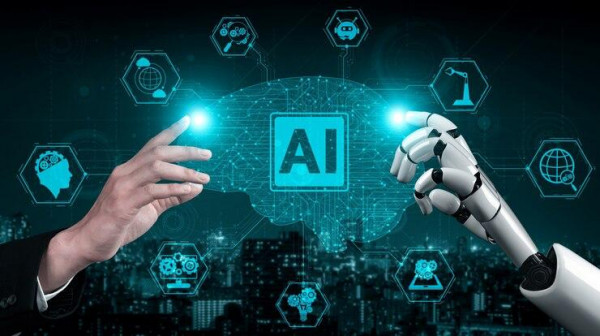Introduction
Gone are the days when you could find a job with basic skills. Modern markets are increasingly competitive, and new technologies demand workers with expert-level abilities across the board. In addition, if you want to advance in your career in the industry, you must gain new technical and soft skills. Skill management has become an important part of doing business, and all companies put a lot of money into giving their employees more skills through different learning platforms.
The ever-increasing connectivity of humans to machines, machines to machines, and humans to humans is impacting all business operations and requires specialized skills to meet every challenge. New industry trends and technologies are what drive companies to make more money and give their customers a better experience. Let’s talk about some business trends and technologies that require new or better skills; the role of skill management; and some insights on learning experience platforms.
Top 10 industry trends for 2022 that require new and improved skills.
- Artificial Intelligence
The technologies of Artificial Intelligence (AI) and Machine Learning (ML) are driving innovation in many different industries and functional areas. New hardware with AI built in and new algorithms are made to improve the current systems and help the manufacturing and service industries deal with new problems. Advanced AI lets employees do things like predictive maintenance, swarm intelligence, cognitive computing, context-aware computing, smart machines, generative design, and hardware accelerators. The employees must be able to handle AI systems with training and sufficient practice. - Human Augmentation & Extended Reality
The cognitive and physical augmentation of humans is another trending business field. Human limitations are augmented with the assistance of technologies like wearables and exoskeletons. Further, mobile devices, natural and intuitive user interfaces, and portable machine control screens make it easier to use such technology. XR technologies like augmented reality (AR), mixed reality (MR), and virtual reality (VR) will be looked into, for example. - Edge, Cloud Computing and Fog
The enormous data output by the Industrial Internet of Things (IIoT) is pushing the adoption of edge, cloud computing, and fog capabilities in the current industrial setup. Custom hardware and software solutions like distributed clouds, connected clouds, hybrid clouds, distributed compute and storage, etc., are shaping this industry. - Network & Connectivity
Networks and connectivity are among the primary driving forces on which most industries run. Some of the technologies developed and used for implementing IIoT are edge-to-cloud, 5G, low-powered wide-area network (LPWAN), real-time driven deterministic ethernet, etc. These technologies continuously improve machine-to-machine and human-to-machine communication, data transmission, etc. Hence, we can see increased speed, better security, and reduced costs for network connectivity. - Advanced Robotics
Advancements in technologies like robotics make every industry’s processes faster, more efficient, safer, and less dependent on human intervention. Some of the examples include autonomous robots, cloud robotics, collaborative robots (cobots), pick and place robots, APIs, etc. - Internet of Everything (IoT)
The internet of everything unites real-time data, human skills, and machine intelligence to enable faster, lower-cost, and more efficient processes. A few examples include IIoT, internet of services, internet of skills, and internet of systems. - Big Data & Analytics
Industrial operations data collection on a large scale eventually makes it possible for companies to switch to state-of-the-art facilities. But big data is hard to deal with and only useful for everyone if it can be stored, collected, and analyzed quickly and cheaply. - Additive Manufacturing
Manufacturers are always looking for the newest technologies to meet the growing needs and goals of the market. Additive manufacturing, which began as a prototyping method, revolutionizes and decentralizes production. Ex: Stereolithography, 3D printing, etc. - Cybersecurity, Transparency & Privacy
The information flow due to the connectedness in industries is raising red flags regarding security, transparency, and privacy. The transmission and processing of sensitive data has to be carried out securely to avoid cyber-attacks. Ex: DevSecOps, Blockchain, zero-trusted security, self-adaptive security, etc. - Digital Twin
Digital twin technology helps develop virtual replicas of industrial assets by integrating dynamic real-time sensing and visualization data. Few use cases include virtual prototyping, model-driven design, virtual system validation, throughput optimisation, etc.
How does skill management benefit from upskilling?
The cost of employee turnover is well known to corporate leaders. When companies invest in their employees, they pay them more than just their monthly salary. They also invest in recruiting, onboarding, and development. Upskilling can save money because it can get rid of the need to train new employees in the processes. Upskilling is a method of training current employees to acquire new skills. The specific benefits of upskilling include:
- Employee retention
- Customer satisfaction
- Better productivity
- Better motivation
- Higher profits
- Better brand image
- More innovation
- Better employee experience
Some of the best upskilling strategies that can help your employees achieve the endeavor in a faster way are,
- Design and support personal development plans
- Allocate time during the workday
- Provide job-specific upskilling or credentialing programs
The best ways to implement upskilling training programs are through,
- Classroom training
- Virtual classroom training
- Microlearning
- Lunch and learns
- Mentors or Subject matter experts
Learning Experience Platform (LXP) for upskilling and reskilling
Rapid changes in technology and a major shift in workplace culture are two main factors driving the need for more learning and development (L&D) opportunities. Regardless of the industry type, upskilling and reskilling have become essential components of talent strategies, and companies are willing to invest in their workforce.
Learning Management Systems (LMS) are helpful for distributing the necessary training programs, but the L&D process needs a more robust and smart technology stack to meet current and future business needs. Companies have learned that personalized skill management leads to greater success. Learners have high expectations for an intuitive UI and a desire for connection across various technology platforms.
The best solution to these demands is found in a Learning Experience Platform (LXP). An LXP is a software system that is designed around the needs of the user and acts as a hub for an organization’s upskilling operations. Here, users (employees) find learning resources and community spaces to train together, while administrators gain access to insights that assist them in assessing and reducing the skill gaps at scale. The features to look for in an LXP for your company are,
- The Right UI for learners and Admins
- Expanded Content
- Personalized Skill Development
- Social Tools and Functionality
- Rich Analytics
Conclusion
Upskilling has a plethora of advantages, from improving employee motivation to saving money for the company. Integrating an all-purpose Learning Experience Platform (LXP), an upskilling training program suitable for your business goals, and leadership guidance will help employees fast-track their upskilling journey and transform them into champions, delivering the best results that can improve the company’s brand value and drive revenue growth.



